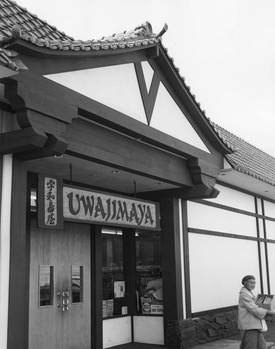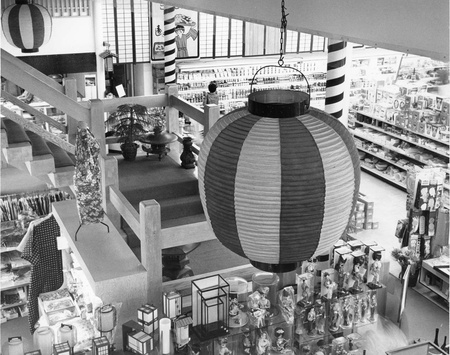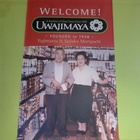In the unity of the family
After the death of the founder, Fujimatsu Moriguchi, the second son Tomio became president of Uwajimaya, and the four brothers, Kenzo, Akira, and Toshi, expanded the business. The opening of a store at the 1962 World Expo was a major factor in expanding the customer base beyond Japanese and Asians.
The store responded to diverse needs by holding cooking classes for Asian cuisine and stocking products from Asian countries other than Japan, such as China, Korea, and the Philippines. In the midst of this trend, in 1970, Uwajimaya expanded and moved from its previous location on Main Street to the corner of 6th Avenue and King Street, very close to Uwajimaya Village, where the current Uwajimaya is located.
The trigger was a human connection within the community, just like the business development so far. According to Tomio Moriguchi, he received a suggestion from his friend Shigeko Uno at the time. She was the first person to become an executive at the Rainier Heat & Power Company, starting as a bookkeeper. Both Tomio and Shigeko Uno were born in April, and the three of them, along with another friend who also had the same birthday, Dr. Toda, would hold a grand dinner together every April.
During the meeting, the doctor suggested to her that she rent the property on the corner of 6th Avenue and King Street to Uwajimaya. Tomio said no, it would be too big and too much for her to handle. However, she later contacted him to let him know that other company executives wanted to meet him.
So they discussed the matter at a Polynesian restaurant on the waterfront. The executives who attended seemed to have a lot of authority, and they said, "It seems impossible for you to buy it, but let's try to come up with various ideas," and as a result, Uwajimaya rented the property (building) and opened for business again in 1970.
It turned out later that the landlord was having trouble with the tenant, who was threatening to move out if the rent was raised. As a result, Uwajimaya was able to rent the space at a reasonable price.
Marriage, buying property
During this time, President Tomio also underwent a big change in his personal life. Just before the relocation in 1969, he married Lovett, a Japanese woman from Hawaii. The two met when one of Tomio's acquaintances brought three women, including Lovett, who had graduated from the University of Hawaii, to Tomio, and introduced them to him. They began to visit Tomio, who was living with his mother at the time, and the couple got married a while later.
They were unable to have children for a while, but eventually had a son and a daughter. According to Tomio, like many Japanese families of his age at the time, his wife stayed at home and was a full-time housewife until the children were about five or six years old, and then she began to help out little by little with the work in the store.
Returning to the topic of the new store, King Street is a street that continues from a gate called Chukagamon, similar to the one in Yokohama's Chinatown, and the surrounding area is commonly known as Chinatown, but this is also where the old Japantown was located, and later, Asian restaurants such as Thai and Vietnamese restaurants are dotted around, leading to the area being called Seattle's "International District."
The single-story building to the immediate right of the Chinese Gate is the relocated Uwajimaya store, with a total floor space of approximately 1,800m2, making it the largest supermarket selling Japanese food on the Pacific Northwest coast. This plan proved to be a blessing, as business continued to grow steadily, and in 1974 the company was able to purchase the entire lot on which the store stood. However, the condition was that they would purchase the entire lot, including the old Publix Hotel that was on the corner.
Expanding stores and building a foundation
As the other party wanted to sell the land and building as quickly as possible, the sale negotiations went smoothly, and Uwajimaya acquired the lot using the real estate on Main Street where its store had been located as collateral. Four years later, in 1978, a second floor was added to the store, expanding the floor space by about 80%.
The first thing that was improved in the store's remodel was the expansion of the main food section. New meat and produce sections were added, the fresh fish section was expanded to include fish tanks, and a prepared food section and takeout section were also added. Other items on offer included gifts such as crafts, books, records, clothing, kitchenware, cosmetics, and even Japanese kimonos and fabrics. This is how the basic form of Uwajimaya was established.
In the same year, 1978, the company also opened the Uwajimaya Bellevue store in the Crossroads district, located a dozen kilometers east and experiencing rapid population growth.
(Titles omitted)
© 2018 Ryusuke Kawai








